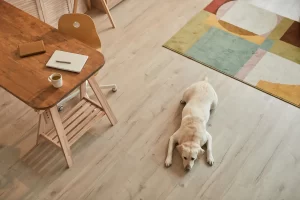Decluttering Your Bedroom For Better Sleep

Clutter in your bedroom distracts your brain from winding down and getting a good night’s sleep. This clutter can also cause cortisol levels to increase during the day.
When decluttering your bedroom, think about the room’s purpose and vision. Make sure items that don’t fit that purpose or vision are housed elsewhere.
1. De-clutter the surfaces
When items are left strewn across your bedroom surfaces, it can create an overwhelming and disorganized feeling. It’s important to make it a priority to declutter your bedroom, so you can keep it looking tidy and calm.
This is why it’s a good idea to keep only the things you use and love in your bedroom! It’s also important to not add anything new to the space.
If you need to add something, make sure it’s a simple item like some art that makes you happy or a book to read before bed! Keeping the space as minimalist as possible can help you stay on track with your decluttering goals and maintain the peaceful retreat you created.
2. De-clutter the furniture
Your bedroom should be a place for rest and sleep, not a catch-all space for items that don’t have a home. Clutter piled up on surfaces like tables and nightstands adds to the visual stimuli that your brain has to process, which causes stress and may even contribute to feelings of anxiety.
Start by creating a vision of your bedroom and the feelings you’d like it to evoke. This will help you determine what needs to stay and what should go. It’s also helpful to assess your furniture – is it serving its purpose or is it just taking up space? If it’s the latter, re-home or donate it.
3. De-clutter your wardrobe
Seeing piles of clothes strewn across your bedroom, whether clean laundry waiting to be put away or items you plan to re-wear, can easily make your bedroom look messy and cluttered. It’s important to sort through your clothes and get rid of any you don’t wear or no longer fit.
It’s also worth keeping in mind your vision for the room when decluttering – if you want your bedroom to be a relaxing retreat, keep clutter like bills and to-do lists out of it as these can cause stress before sleep! Once you’ve cleared off all the flat surfaces in your bedroom, it will be much easier to organize what you do want to keep.
4. De-clutter your drawers
Clutter in your bedroom often occurs when things have no home and end up piled up on flat surfaces. So, as you declutter your drawers, make sure everything you choose to keep has a home to go back into. This will help ensure it doesn’t end up cluttering your flat surfaces again.
Keep your nightstand clear by keeping only the essentials for bedtime – water, book, medication, etc. Also, remove any clutter magnets such as chairs and chaises from the room. These can easily become repositories for piles of clothes and other miscellany. Rather, opt for chairs that offer hidden storage such as those with removable cushion covers or a simple slip cover.
5. De-clutter your shelves
If you have piles of items laying around on your bedroom’s flat surfaces, it is time to sort them out. Start by finding or creating homes for the things you want to keep, so they don’t clutter up your flat surfaces again.
Don’t forget to remove anything that doesn’t belong in the bedroom, like exercise equipment or work materials. Keeping these items in your bedroom will make it harder to wind down and relax before sleep.
Once your room is decluttered, you will find it easier to fall asleep and have a restful night’s sleep. Plus, a clean and tidy sleeping space encourages you to keep it that way!
6. De-clutter your closet
Your bedroom should be a place that is free of anything that is a distraction to sleep. This includes documents such as to-do lists, chores and bills. These should be filed away or thrown out so you are not unconsciously stressed by them before you go to bed and wake up each day.
When decluttering your closet, start by removing everything that doesn’t belong there and either find or make a home for it (this could be in your office, another part of the house, a box somewhere else). Next, re-organize what is left by using drawer dividers, baskets or over the door organizers to keep items neatly contained.







